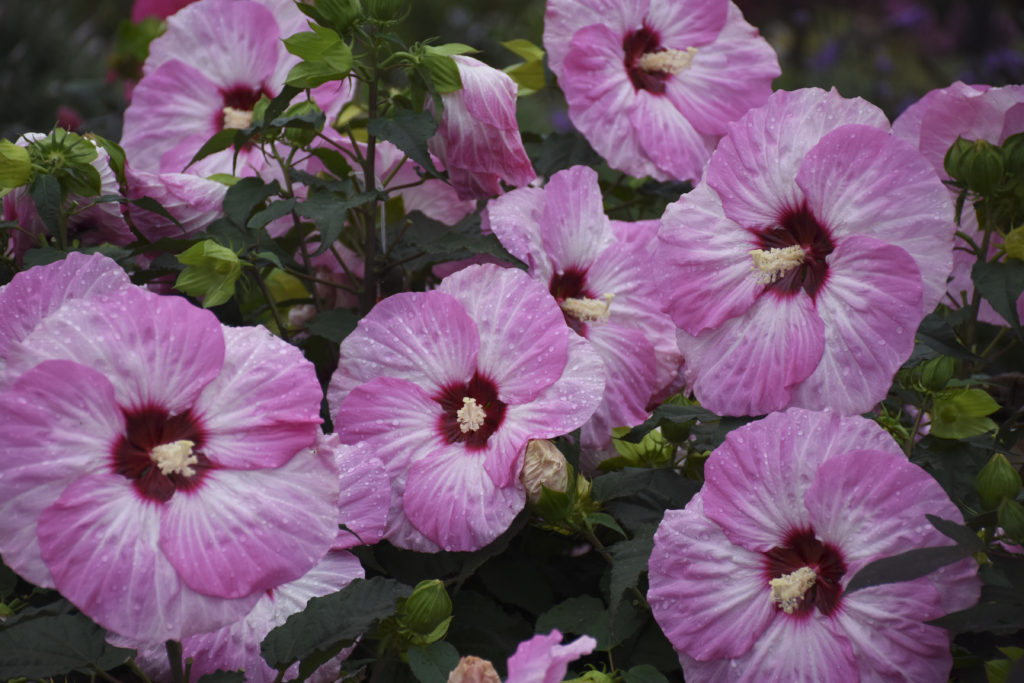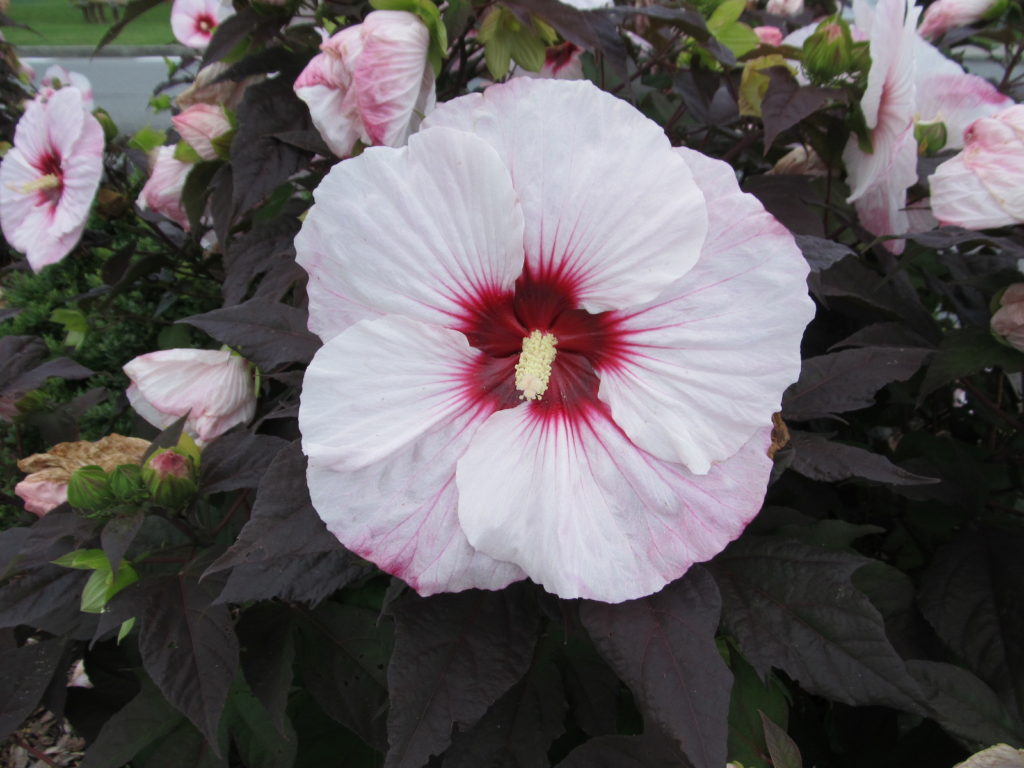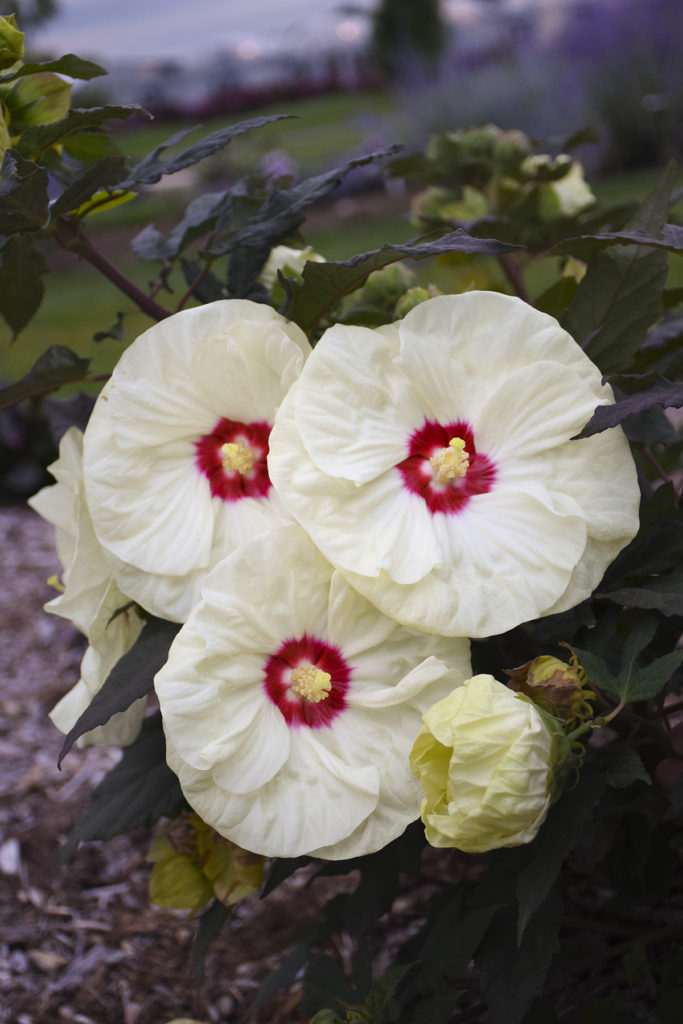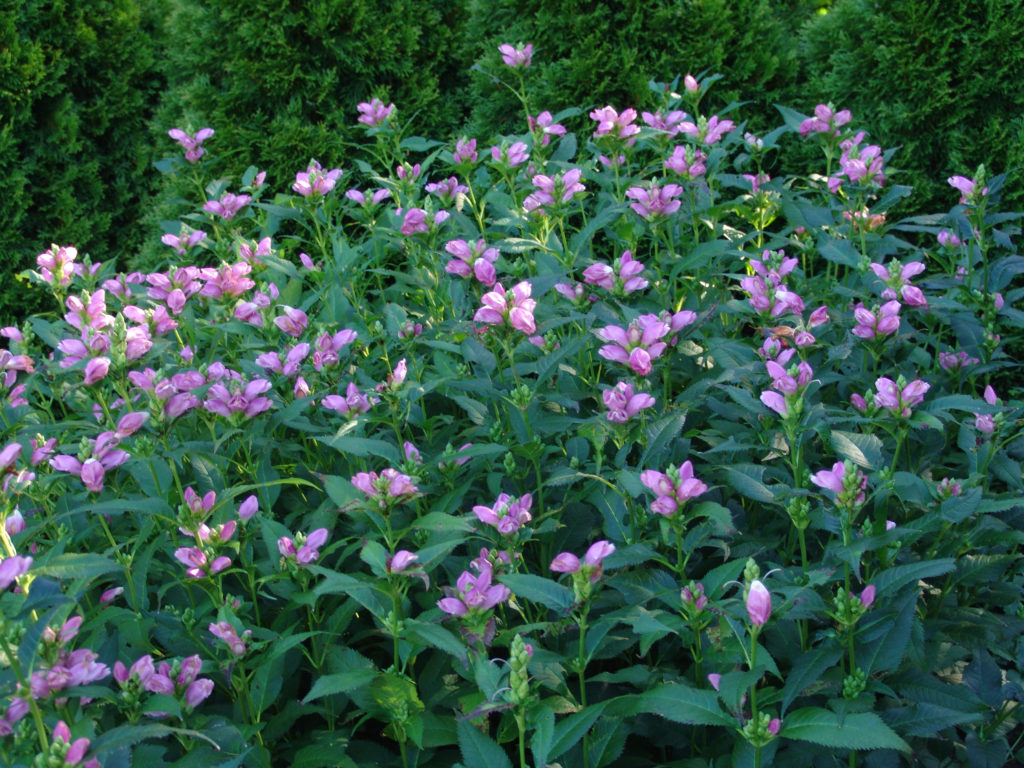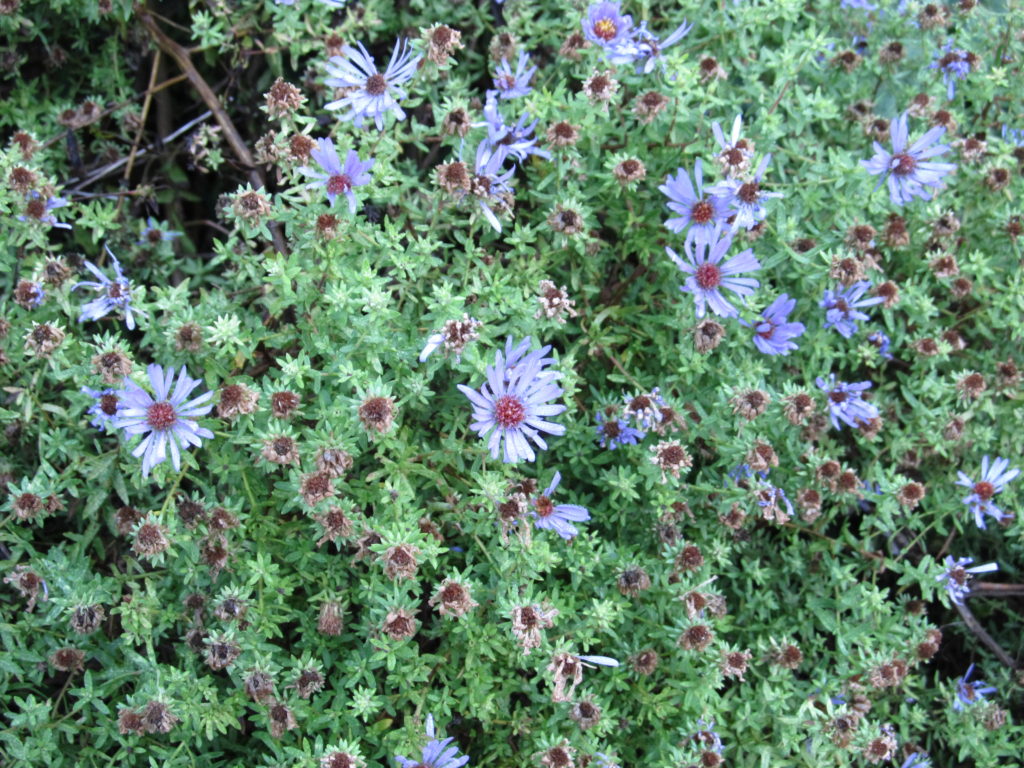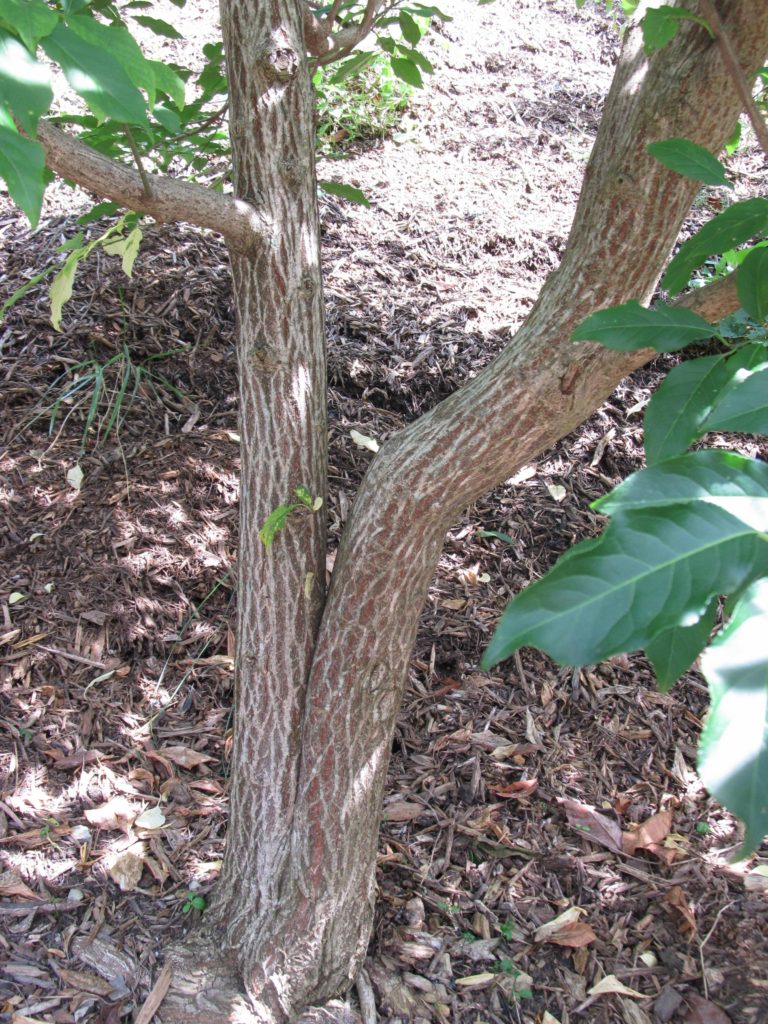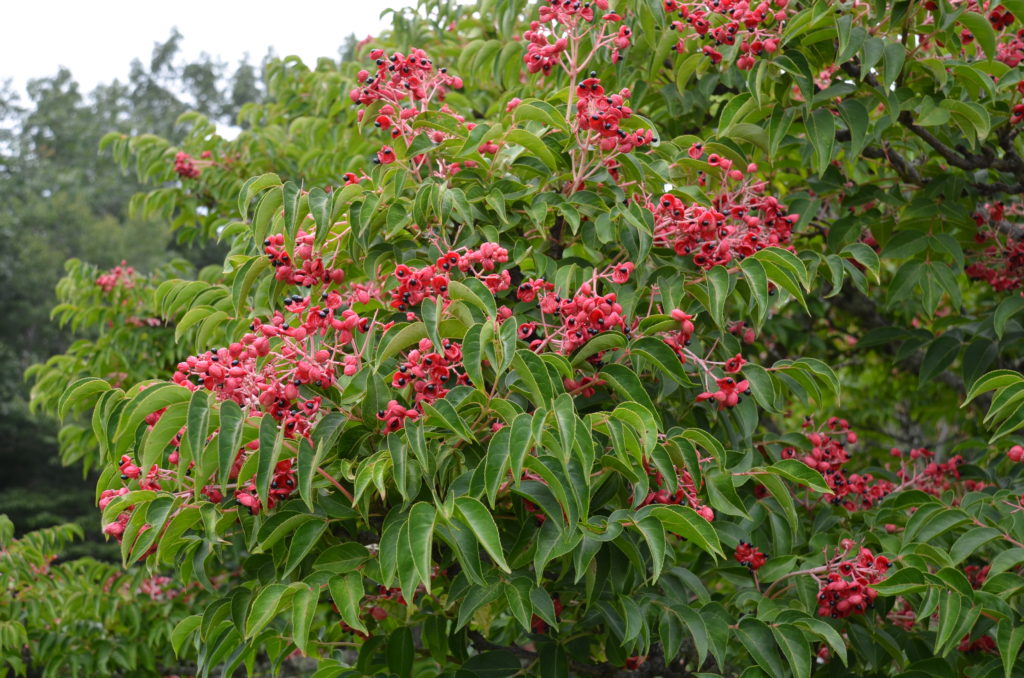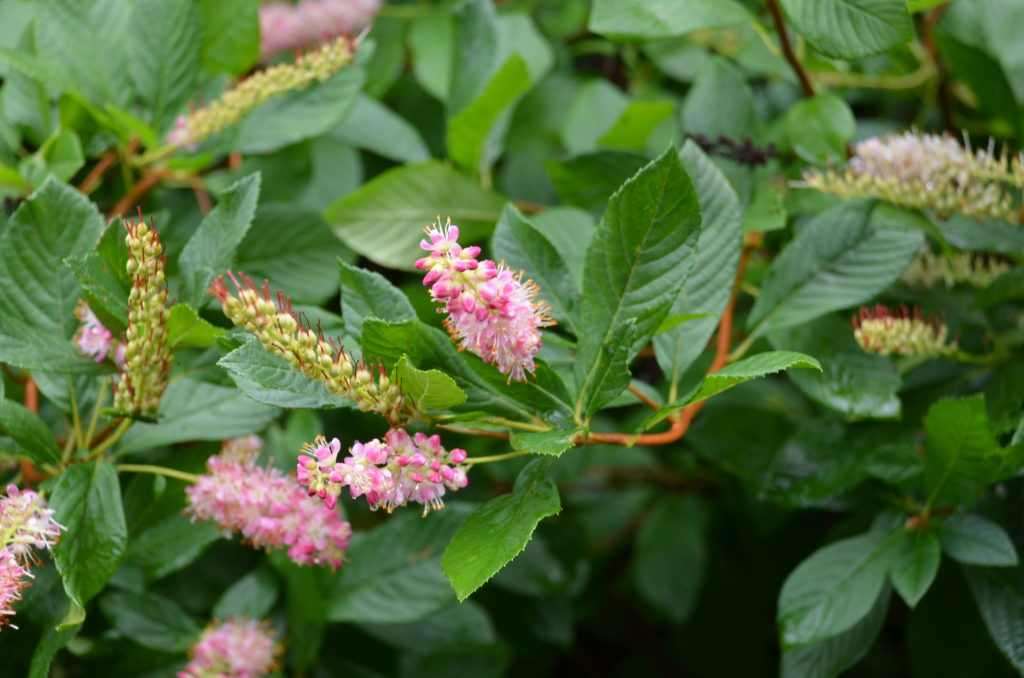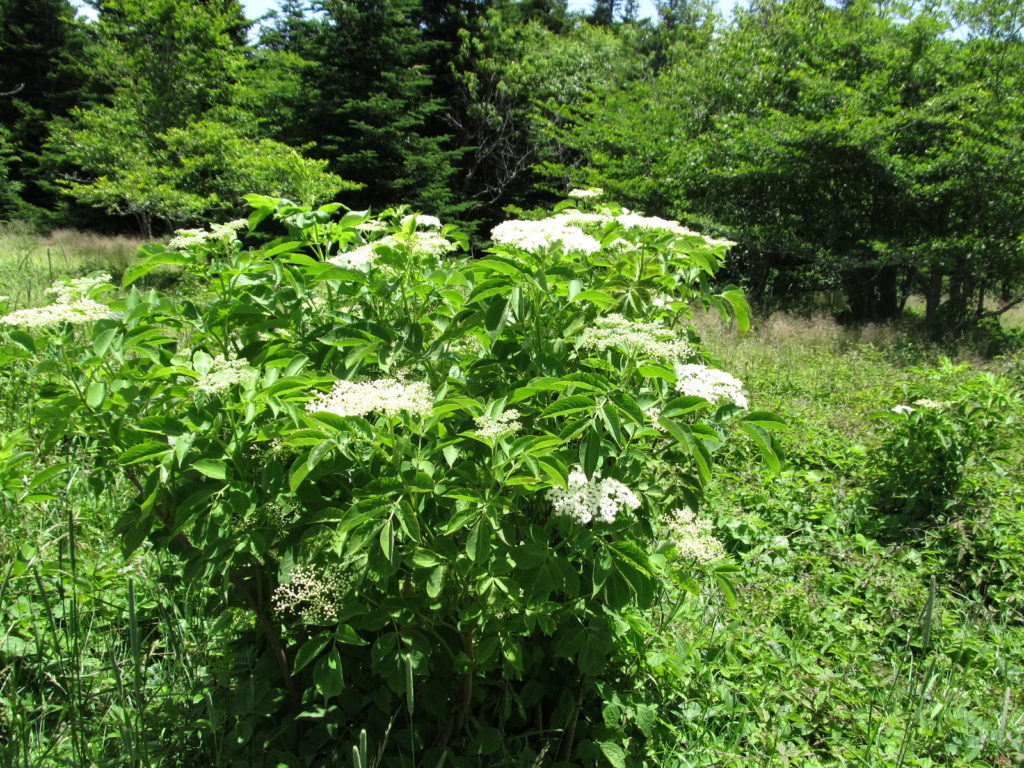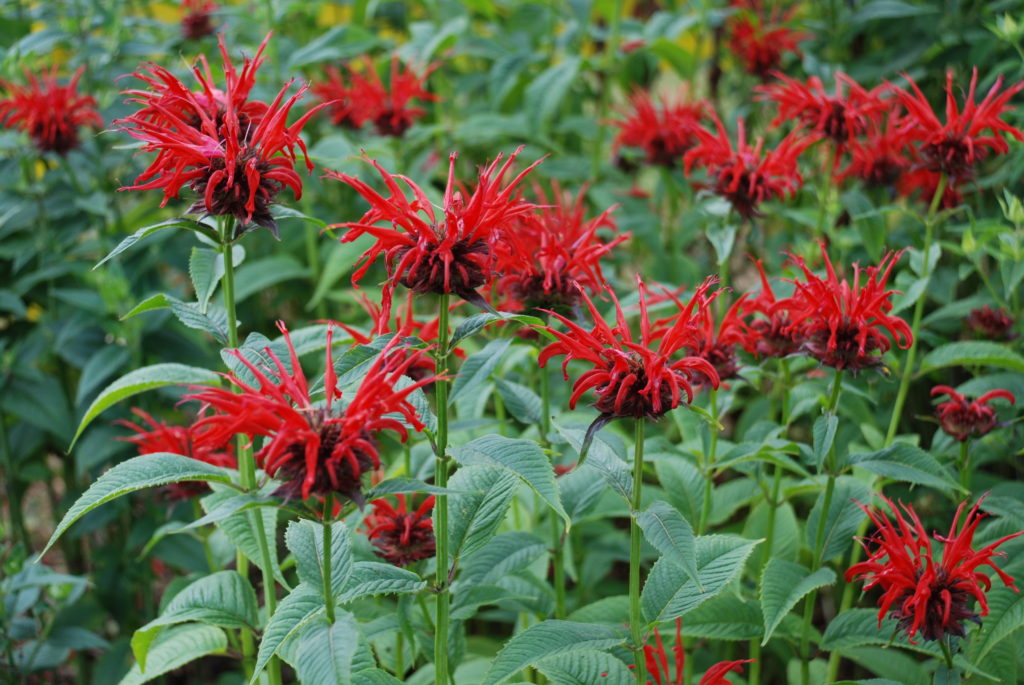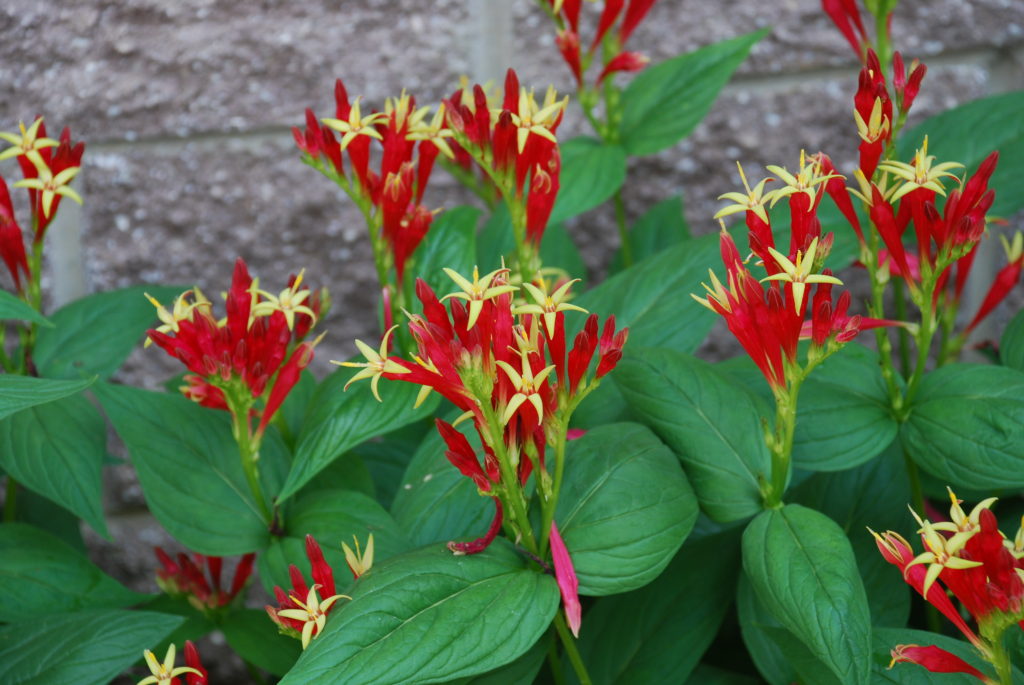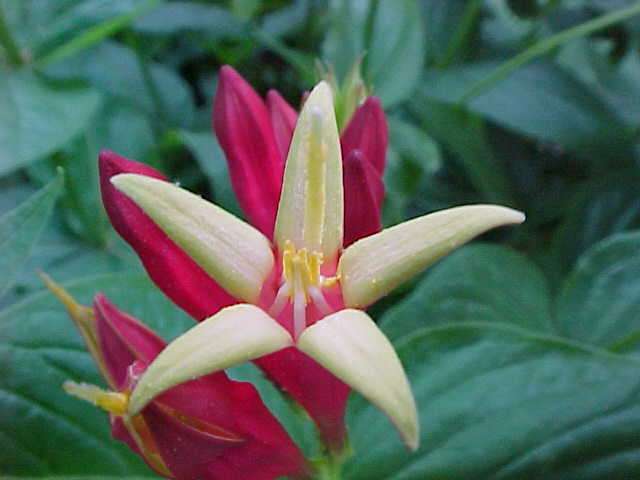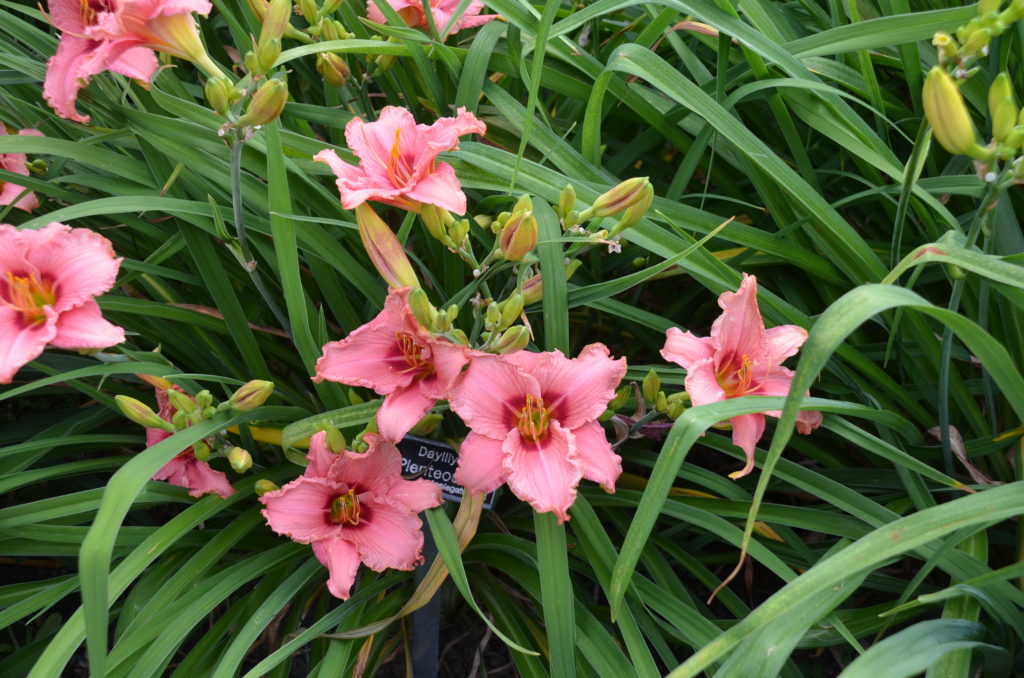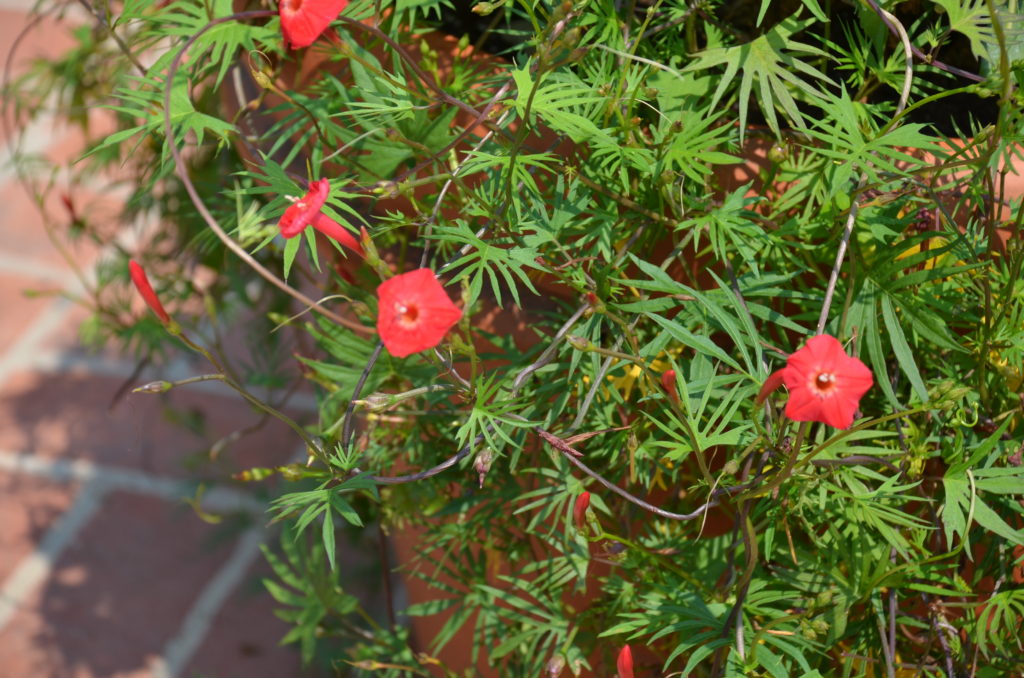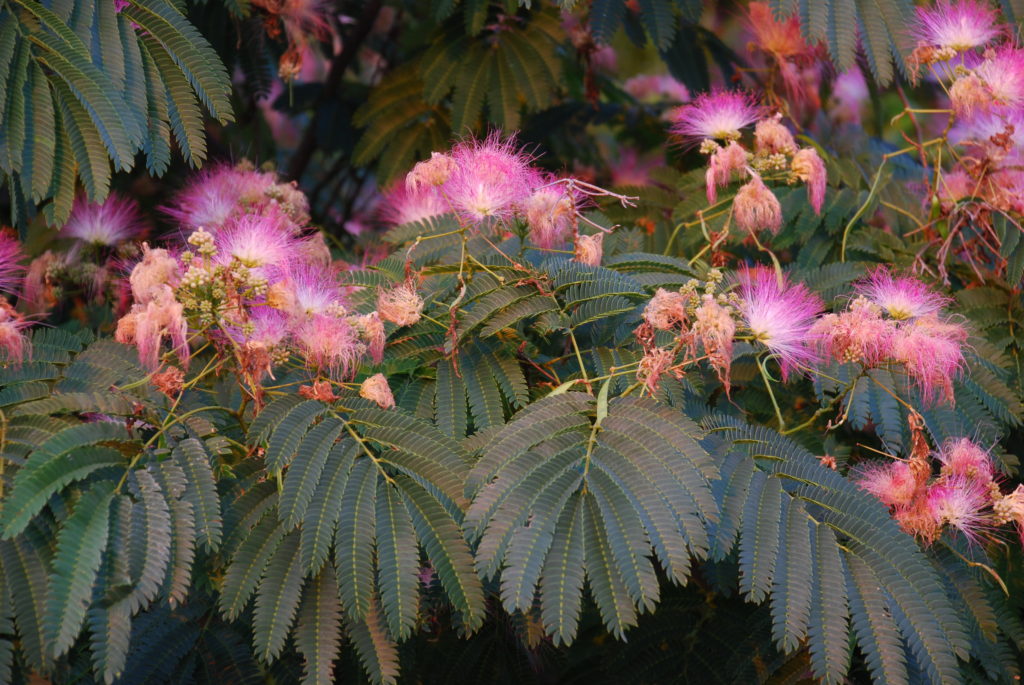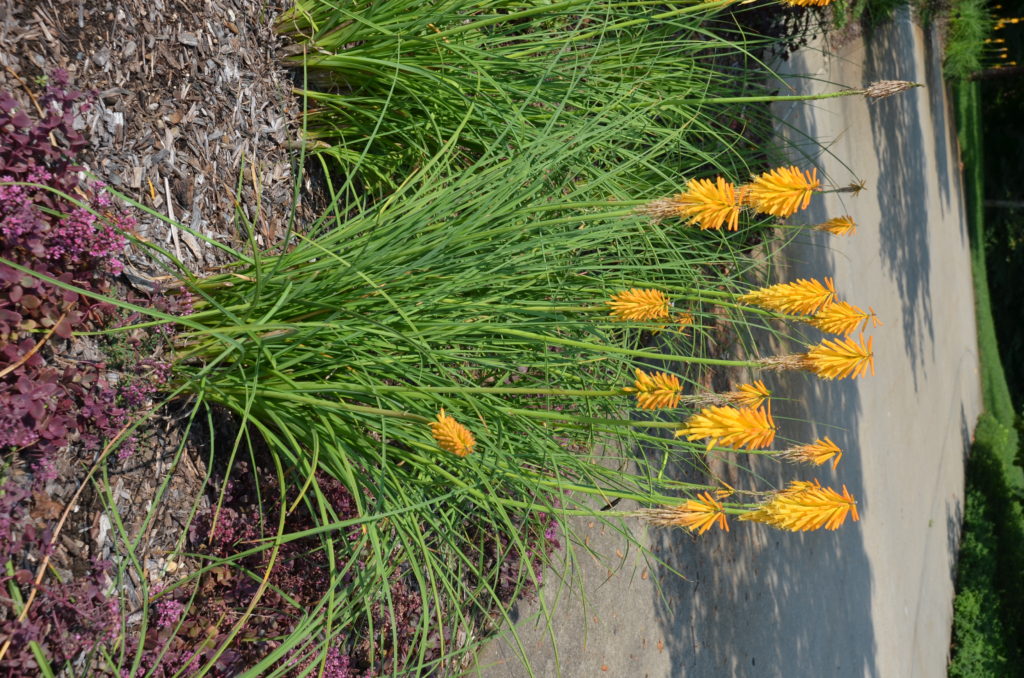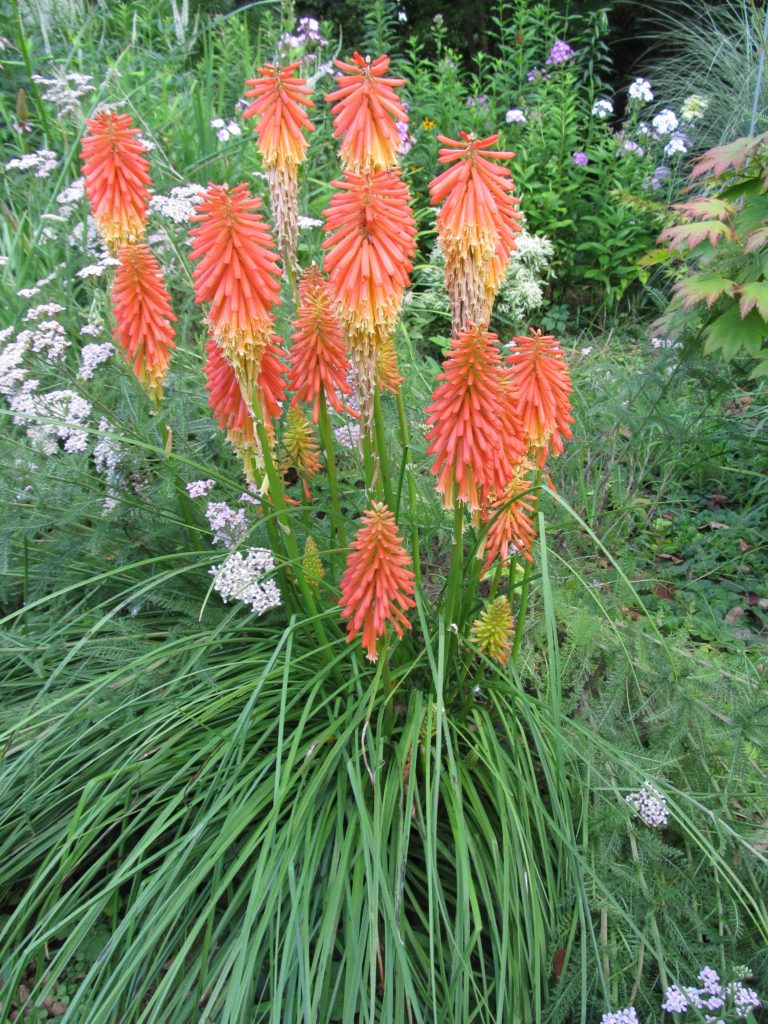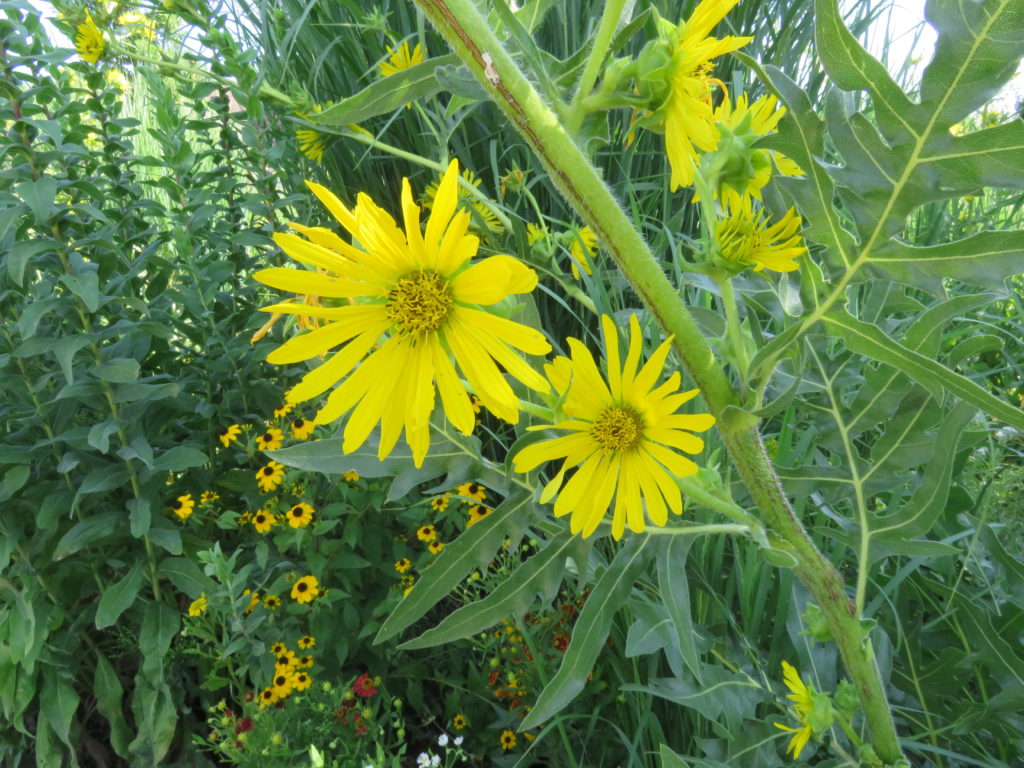Here are six showy architectural gems to grow in your garden. All six are “big guys” and are valued for their bold presence, disease-free foliage, and their attractive flowers, that are also great pollinators.
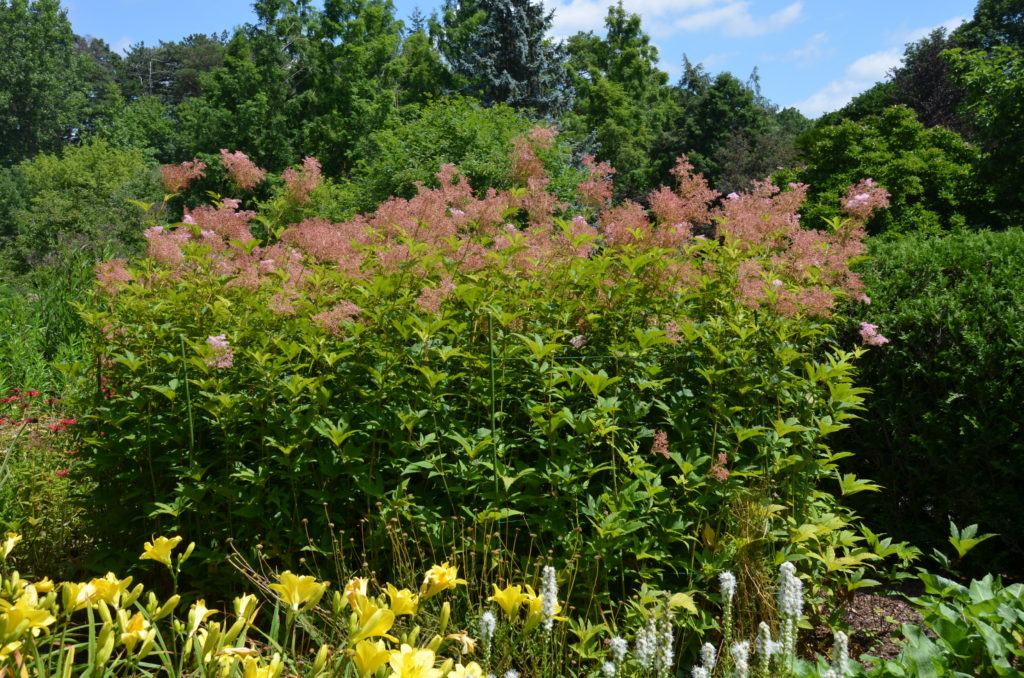
Queen of the Prairie (Filipendula rubra) is a U.S. native perennial that mimics an astilbe on steroids. This tall, upright, clump-forming perennial typically grows 6-8 feet tall and features branched, terminal, astilbe-like, 6-9 inch wide panicles (corymbs) of tiny, fragrant, pale pink flowers in early to mid-summer. Deeply cut, bright green, 4-8 inch long compound leaves are composed of 7-9 lobed lance-shaped leaflets. Leaves are fragrant when crushed. (USDA hardiness zones 3 to 8).
Bronze Fennel (Foeniculum vulgare ‘Purpureum’) is a highly aromatic perennial herb. Fennel is widely cultivated for its edible, licorice-flavored leaves and seeds. The variety ‘Purpureum’, also known as Bronze Fennel, has dark “smoky” foliage that is very attractive planted along perennial borders or in wide annual containers (staking necessary). You may opt to keep plants from blooming so they don’t reseed. However, the yellow flower heads are attractive. Specific swallowtail butterflies utilize bronze fennel as a food source for their caterpillars. (Zones 4 to 9).
Giant sunflower (Rudbeckia maximum) grow tall and bold. Huge basal powder blue leaves on giant stalks rise straight up bearing deep golden coneflowers. The central flower cones of “Rudbeckia max” grow 4-6 inches high. The old bloom stalks attract goldfinches for the seed (Zones 4 to 9).
Fall flowering sunflower (Helianthus angustifolium) is a narrow leaf perennial sunflower that will thrive in moist soil with full sun to part shade. Plants grow 5- 7 feet tall with cutleaf dark green foliage attached to maroon stems. An explosion of 2-3 inch wide yellow flowers comes in September into November. (Zones 6 to 9).
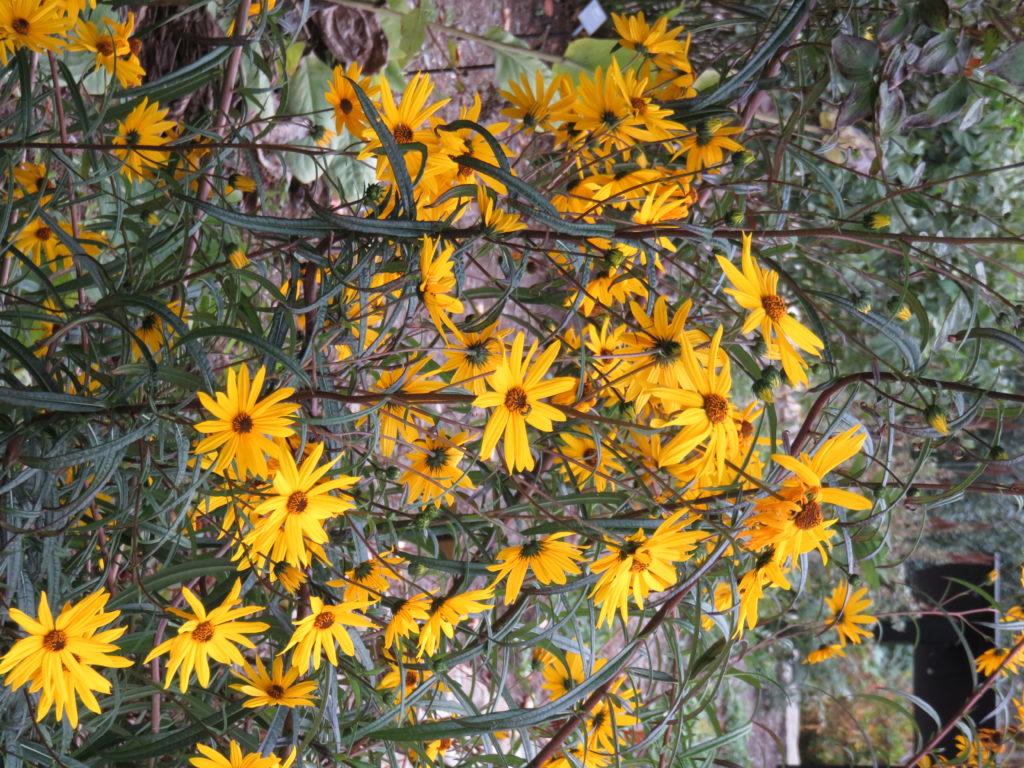
Scarlet Rose Mallow (Hibiscus coccineus) is a vigorous, woody-based 3-6 feet tall perennial. Stems bear showy 3-5 inch wide, 5-petaled, bright scarlet red flowers from mid-summer to early fall for a long bloom season. Palmately palmately compound, deep green leaves are very hemp-like, (5-6 inches wide). (Zones 6 to 11).
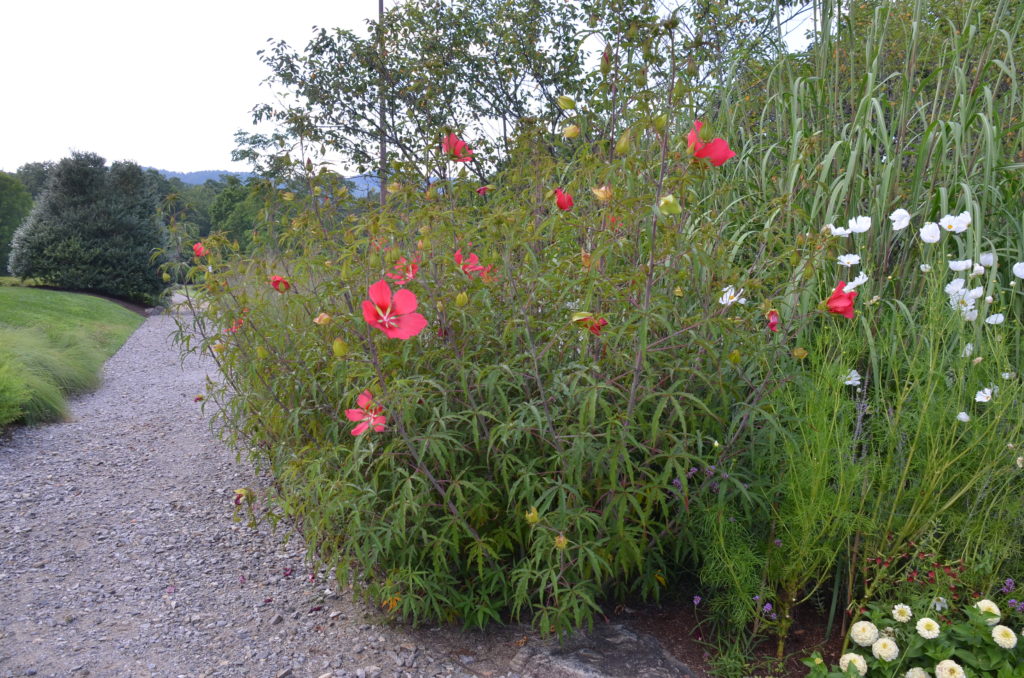
Rosinweed (Silphinum spp.) is a native sunflower-like meadow plant. It typically grows on coarse erect stems to 4-8 feet tall and is identified by its square/quadrangular stems, coarsely-toothed foliage, and pairs of cup-forming leaves. Flower heads (to 3 inch diameter) feature light yellow rays (20-40) and darker yellow center disks bloom in summer on the upper part of the plant. Over wet spells, leaf cups collect dew and rain water. (Zones 4 to 8).
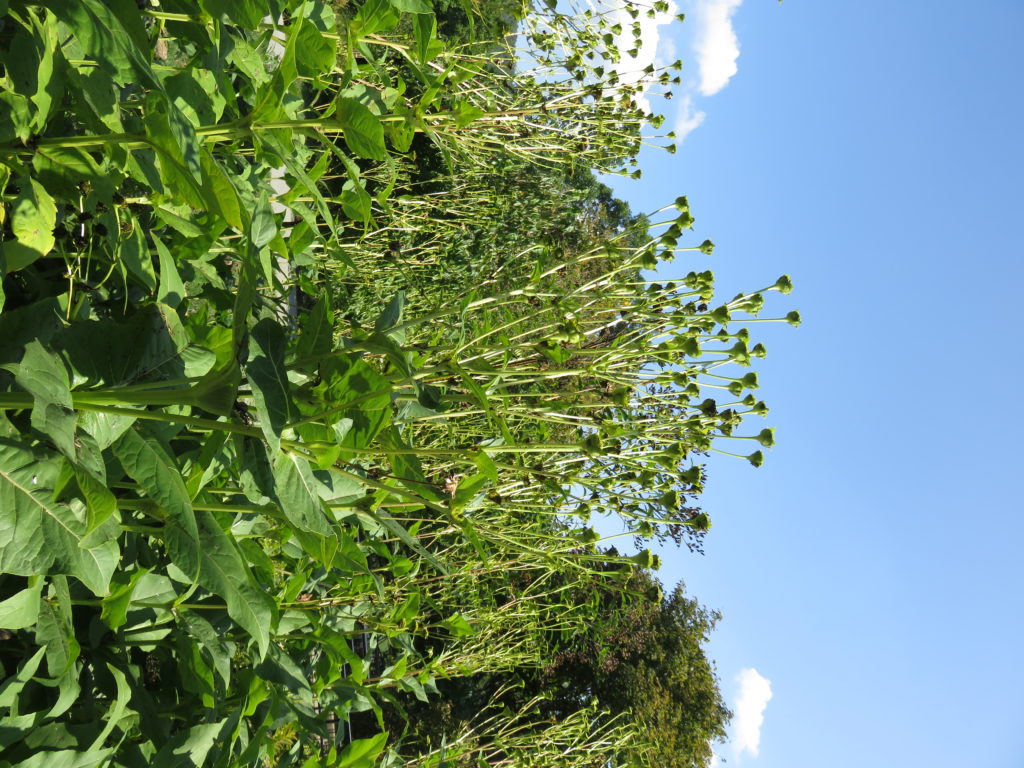
Six Tall Architectural Statuesque Perennials

